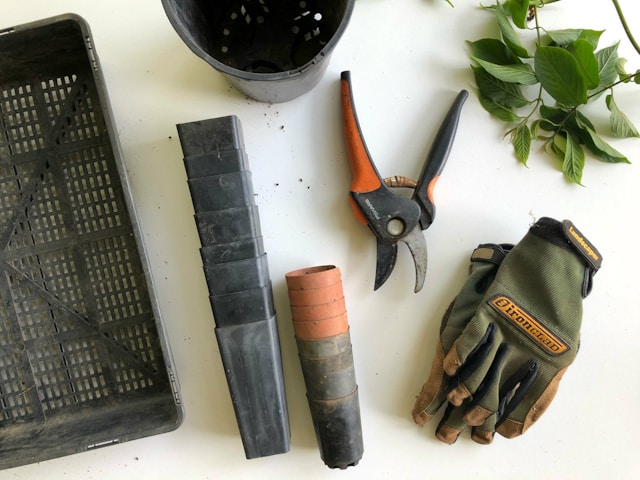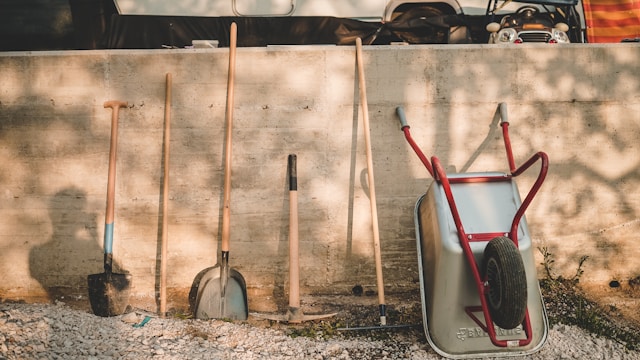Physical Address
304 North Cardinal St.
Dorchester Center, MA 02124
Physical Address
304 North Cardinal St.
Dorchester Center, MA 02124

Ah, branches. They grow with wild abandon—twisting, tangling, reaching for the sky—and before you know it, your once-tidy garden starts to look like an overgrown jungle. Whether you’re snipping off the scraggly ends of a rose bush or lopping off a stubborn limb that’s blocking your walkway, one thing’s for sure: you need the right garden tools to cut branches.
But not just any tools. Oh no, my friend. We’re talking about smart, sharp, well-crafted tools designed to do more than hack and slash. We’re talking about precision, efficiency, and keeping your plants healthy in the process.
So grab your gloves, pour yourself a cup of tea—or maybe something stronger—and settle in. Because we’re about to take a deep, satisfying dive into the must-have garden tools to cut branches, and trust me, this isn’t going to be your average how-to guide.
Let’s get one thing clear: not all cuts are created equal.
Sure, you could grab your old kitchen scissors and try to snip that low-hanging limb, but you’ll likely end up with frayed ends, a sore wrist, and a tree that silently judges you for your poor choices.
Branches, depending on their thickness and flexibility, require tools that match their strength. Using the wrong tool doesn’t just make the job harder—it can actually damage your plants and lead to disease, rot, or even kill off entire limbs unnecessarily.
So yes, having the right garden tools to cut branches isn’t just about convenience. It’s about doing the job right.
Small but fierce.
Pruning shears—also called secateurs—are like the garden’s version of a Swiss army knife. Perfect for smaller branches (generally up to ¾ inch thick), they’re ideal for deadheading flowers, trimming shrubs, and snipping small twigs.
There are two main types: bypass and anvil.
Bypass shears work like scissors, with two blades passing each other for a clean, close cut.
Anvil shears, on the other hand, use a single blade that closes onto a flat edge. These are better for tougher, dead wood.
Keep them sharp. Oil them often. And don’t underestimate their power. These little champs are essential garden tools to cut branches—and not just any branches, but those delicate ones that need finesse.
Now we’re talking.

When shears are too small, but a saw feels like overkill, you reach for your loppers. With long handles that provide leverage and thicker blades, loppers are perfect for cutting branches up to 2 inches thick. And honestly, the satisfying snap when you cut through a limb? Incredibly rewarding.
Pro tip: go for telescoping loppers. Extendable handles mean more reach, less ladder climbing, and fewer sore backs. Bonus!
Some branches, let’s be real, are just too beefy for shears or loppers. That’s when the pruning saw comes out of the shed like a sword from a scabbard.
These saws are designed for green (living) wood, with aggressive teeth and curved or straight blades. A curved blade gives you better control on smaller branches, while a straight one works best on thicker limbs or overhead cuts.
There’s something primal and oddly poetic about sawing through a branch, isn’t there?
Keep in mind—when it comes to garden tools to cut branches, a pruning saw is your middle ground. It gives you power without going full lumberjack.
Got a limb that’s way out of reach? Don’t risk a fall. Pole pruners are the Jedi weapons of the gardening galaxy.
These extendable tools can reach 8, 10, even 14 feet in the air, and they often combine a saw blade with a rope-activated lopper head. With a good pole pruner, you can cut high branches cleanly without ever leaving the ground.
And that’s a win for both safety and efficiency.
Now listen: not every gardener needs a chainsaw. But if you’re dealing with serious limbs—think 4 inches thick and up—this powerhouse becomes more than handy. It becomes necessary.
That said, chainsaws come with responsibilities. Safety gear. A steady hand. A healthy respect for what it can do.
Electric chainsaws (cordless or corded) are quieter and easier to manage for home gardeners. Gas chainsaws? They’re for heavy-duty tasks and seasoned hands.
If you ever reach this level of pruning, know this: you’ve earned your place in the elite league of gardeners.
Having top-tier garden tools to cut branches is great, but only if you take care of them.
Clean them after every use (sap is surprisingly clingy).
Sharpen them regularly. Dull blades make bad cuts and hurt plants.
Oil moving parts to prevent rust and keep them smooth.
Good tools, treated right, will serve you for years. Maybe even generations.
You’ve got the tools, but do you know how to use them?
Always cut just above a bud or lateral branch to promote healthy growth.
For thick limbs, use the three-cut method: undercut, top cut, then final smooth cut near the trunk.
Don’t prune too much at once. A third of the tree’s foliage—max.
Remember: pruning isn’t just maintenance. It’s art. And science. And oddly therapeutic.
With the right garden tools to cut branches, the job becomes less of a chore and more of a ritual. You learn to listen—to the snap of a clean cut, the hum of a saw through green wood, the rustle of leaves falling gently to the ground.
And in those moments, you’re not just cutting branches. You’re shaping life, guiding growth, and connecting with nature in the most hands-on way.
So go ahead—grab your shears, your saw, your pole pruner—the garden’s waiting.
Happy Gardening with SowHaven!